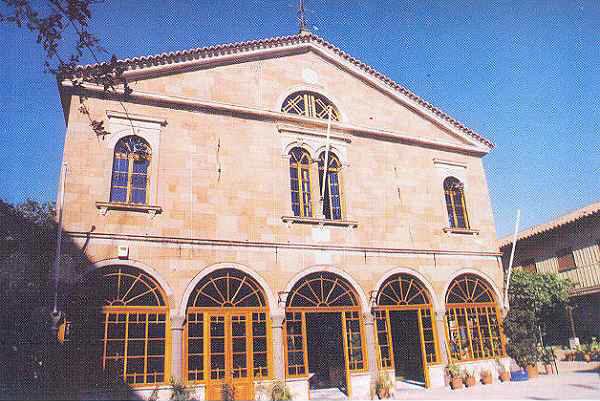
Archangel Michael’s monastery in Mantamados, Lesbos
Near Mantamados village, in the northeastern part of Lesbos, lies one of the most popular and wondrous pilgrimage sites: the old monastery of the island’s patron, Holy Archangel Michael, with the legendary embossed icon.
Around 11th century, Saracen pirates led by Sirchan invaded the Taxiarch’s old monastery and slaughtered all the monks except one. Novice monk Gabriel, whose relics are kept in the monastery to this day, happened to be in the sanctuary and from there he managed to climb up the roof of the church. The pirates ran after him. But then a loud voice was heard and the roof miraculously turned into a stormy sea. Over the foaming waves, a colossal Soldier holding a fiery sword lunged against them. They fled in panic and were later found dead bludgeoned by the Archangel.
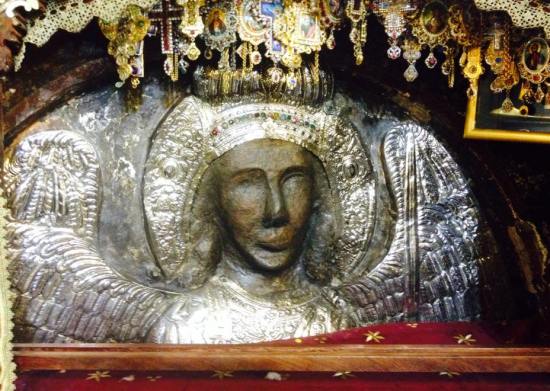
When the monk got a grip, shaken up by the miracle and the appearance of the Archangel, he got the desire to paint him. Simultaneously, as if illumined by the Taxiarch, he took a sponge and reverently collected the monks’ blood into a tub, blended it with white soil and started molding it into His face, as he has seen it up on the church roof. Actually, after he completed the forming of the face, running out of clay, he created the rest of the body very small and in a childish manner, something that is only visible when the covering is removed.
The miracles performed by his grace are amazing. Archangel Michael warned against the following raid of the Saracens and protected the area from them. The building of the current church started and finished thanks to his interference. Initially, he covered the bedrocks with soil and carried the bricklayers’ tools to another place, where the old church stood, thus showing where he wanted his new church to be constructed; finally, he also contributed the money needed for its completion.
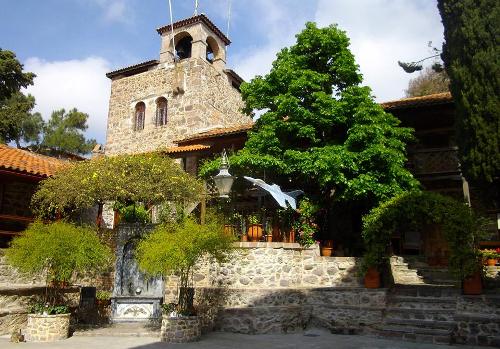
Once in a while, the eyes of the icon well up or the face sweats and the Christians wipe the moisture off with cotton. During the Turkish occupation, he used to appear regularly and even the Turks revered him for his many miracles. He wore shoes made of iron and ran around to protect Christians. It is no coincidence that Mytilene was liberated from the Turks in 1912 on November 8th, the day of the Archangel’s feast.
In the church is also kept the pontifical tunic of Saint hieromartyr Gregory V, Patriarch of Constantinople. The glorious celebration of the monastery is held on the Myrrhbearers’ Sunday, which falls two weeks after Pascha.
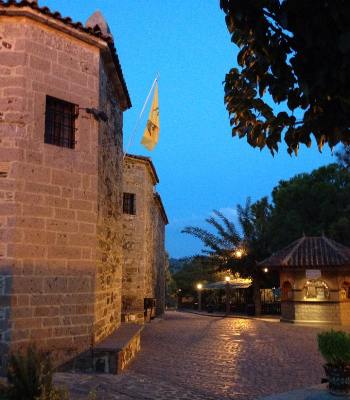
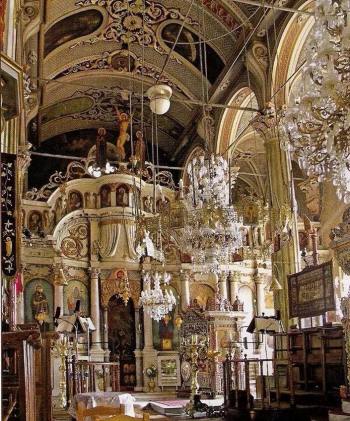
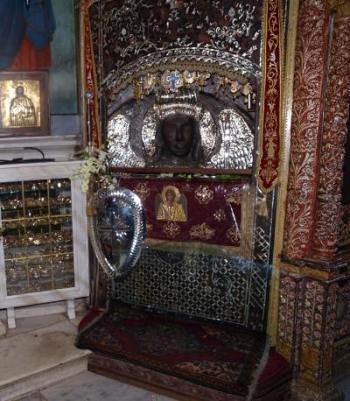
Tel.: (+30) 2253061214
Photos taken from: http://www.pigizois.net




